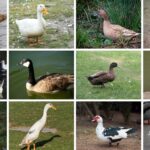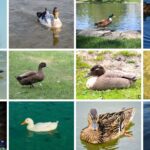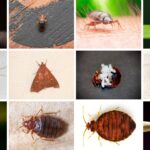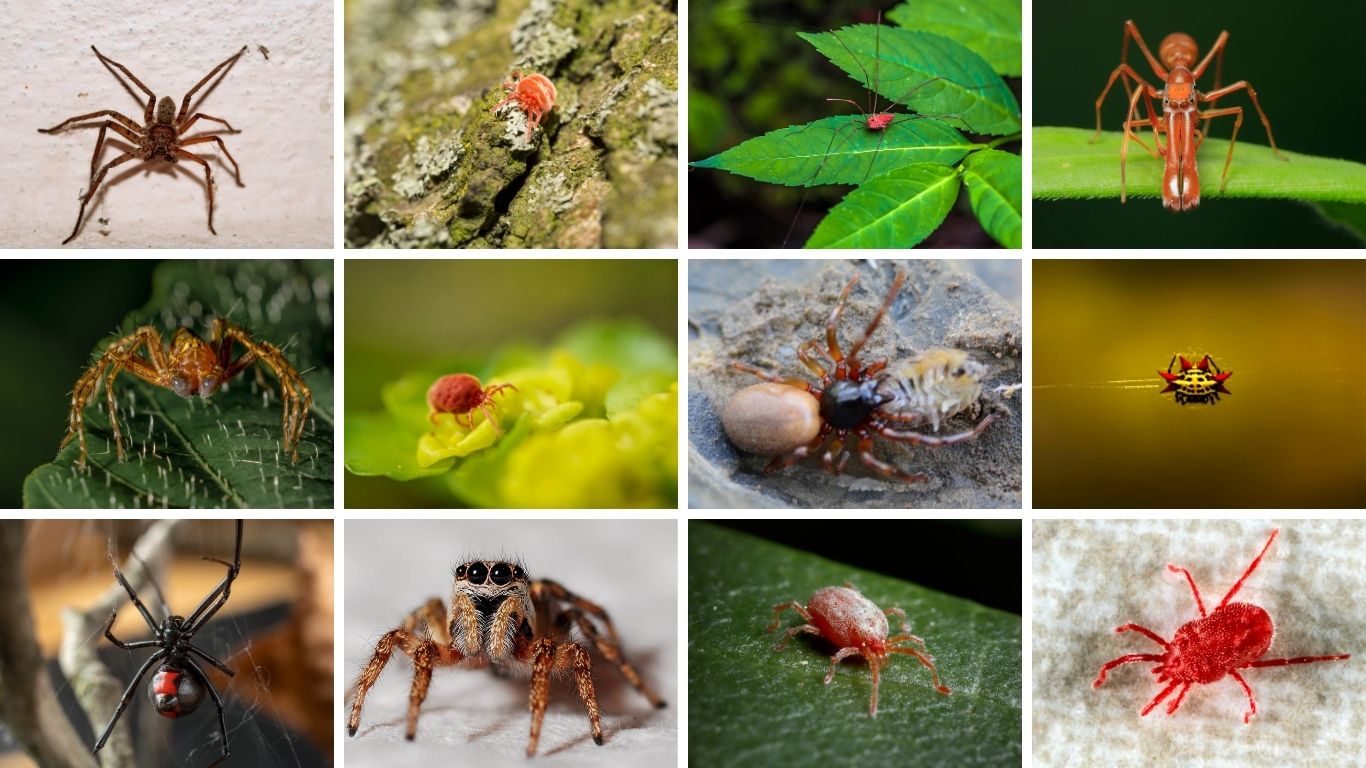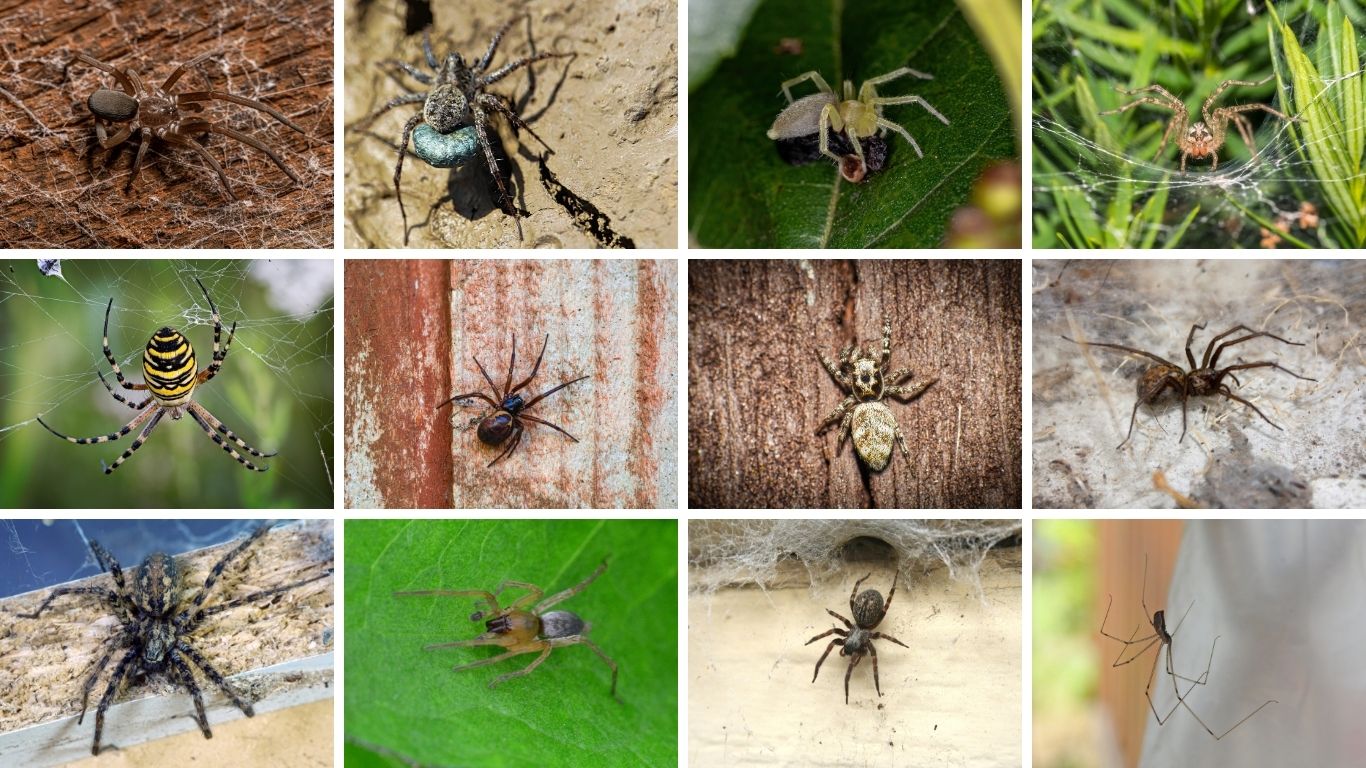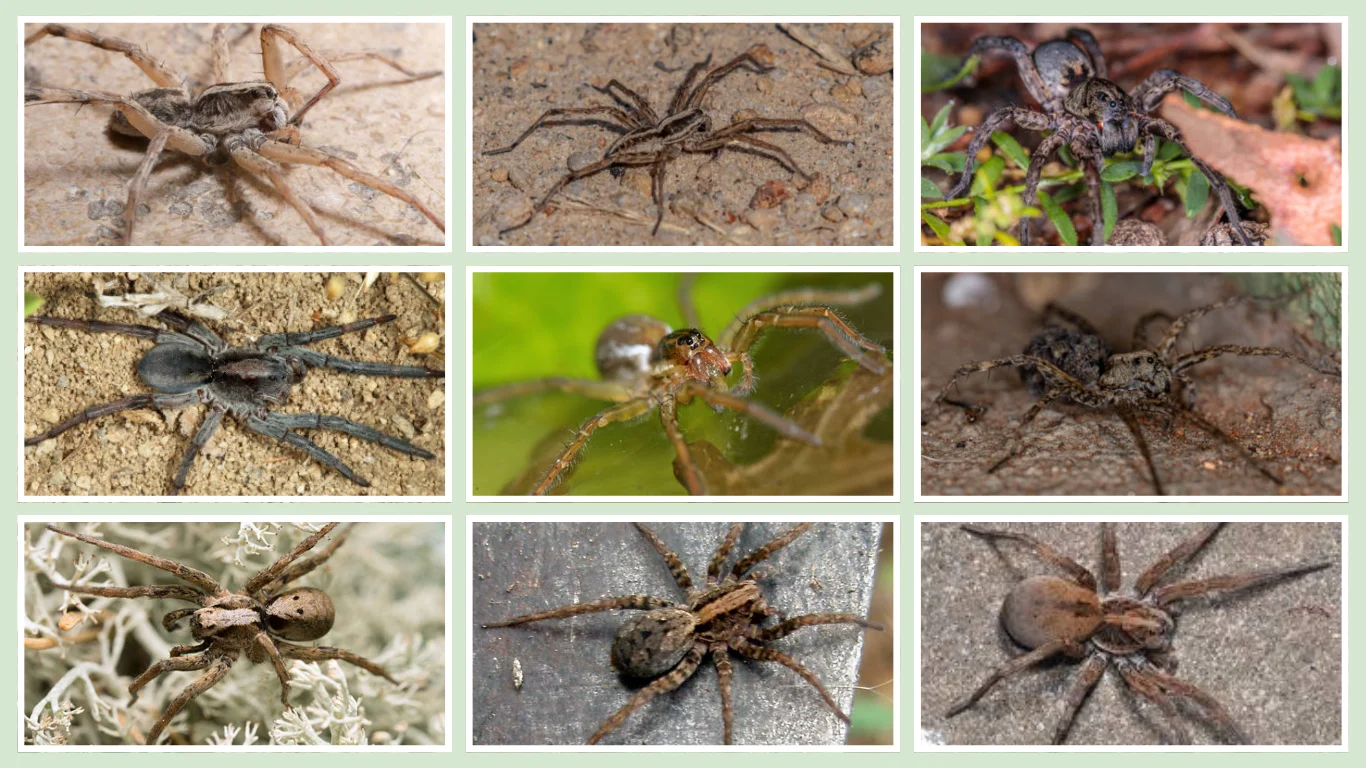Recluse spiders belong to the Loxosceles genus and are known for their shy nature and medically significant bites. Found across the Americas and beyond, these spiders vary in color, habitat, and venom strength. In this guide, you’ll explore 15 known types of recluse spiders, learn how to identify them, understand their behaviors, and recognize potential symptoms from their bites.
1. Brown Recluse Spider (Loxosceles reclusa)
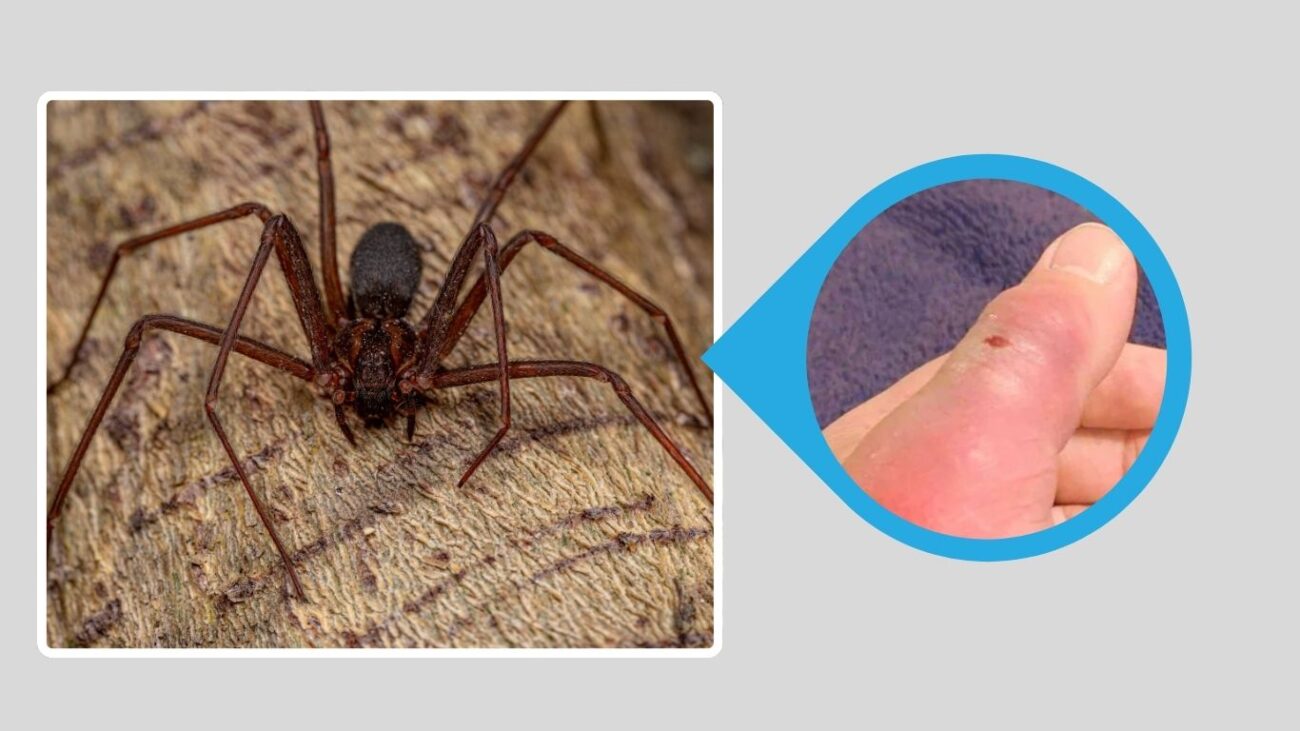
The Brown Recluse Spider (Loxosceles reclusa) is the most recognized and widespread recluse spider in the United States. It is well-known for its violin-shaped marking on its back and reclusive nature, typically hiding in dark, undisturbed areas of homes, sheds, and woodpiles. Though not aggressive, its bite can cause serious skin reactions and tissue damage.
Identification
- Color: Light to medium brown
- Size: Around 6–20 mm (¼ to ¾ inch)
- Marking: Distinct dark violin-shaped mark on the cephalothorax
- Eyes: Six eyes in pairs (dyads) arranged in a semi-circle
- Legs: Long, fine hairs with no spines
Habitat
The brown recluse prefers warm, dry, and dark environments. Indoors, they are commonly found in basements, attics, closets, shoes, cardboard boxes, and behind furniture. Outdoors, they may inhabit woodpiles, under rocks, or in sheds.
Behaviors
Brown recluses are nocturnal and rarely seen during the day. They are shy and avoid human contact, only biting when disturbed. They don’t spin webs to catch prey but instead hunt at night, walking along surfaces.
Diet and Lifecycle
They feed on small insects like cockroaches, crickets, and other soft-bodied arthropods. Their lifecycle includes egg, spiderling, and adult stages. Females can produce multiple egg sacs containing 40–50 eggs, with development from egg to adult taking about a year.
Bite Symptoms
The bite may be painless at first but can develop into:
- Redness and swelling
- Burning or itching sensation
- Formation of a blister, which may turn into an open ulcer
- In rare cases, systemic symptoms like fever, nausea, and fatigue
2. Chilean Recluse Spider (Loxosceles laeta)
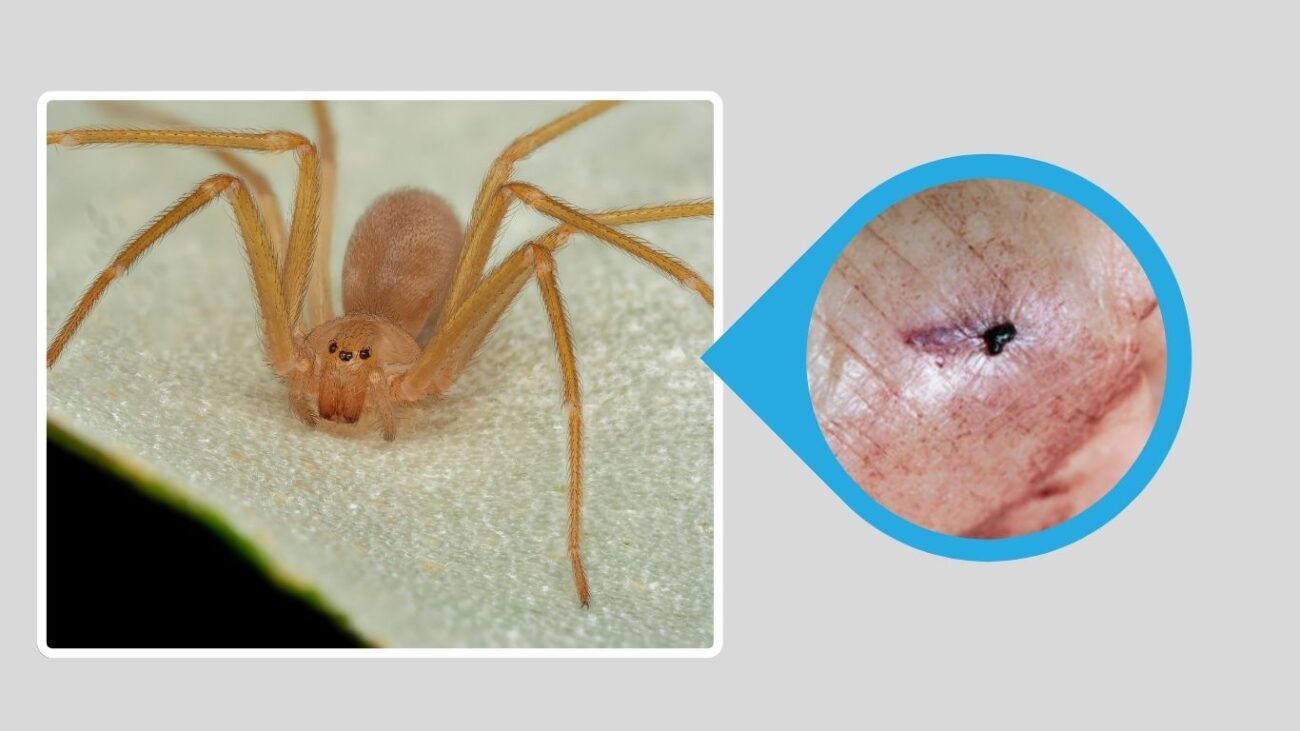
The Chilean Recluse Spider is considered the most dangerous of all recluse spiders due to the potency of its venom. Native to South America, especially Chile and Peru, it has also been introduced to parts of North America. This spider is larger than the brown recluse and can cause severe necrotic wounds.
Identification
- Color: Light to dark brown
- Size: Up to 40 mm (1.6 inches) including legs
- Marking: Dark violin-shaped mark on the cephalothorax
- Eyes: Six arranged in dyads (pairs)
- Legs: Smooth, long, and covered in fine hairs
Habitat
It prefers dark, quiet places like closets, behind furniture, and basements. Outdoors, it can live under rocks, debris, and in woodpiles. In urban areas, they are often found inside buildings, especially where clutter is present.
Behaviors
Chilean recluses are shy, nocturnal hunters. They come out at night to search for prey and retreat to crevices during the day. They are not aggressive but may bite when accidentally pressed against skin.
Diet and Lifecycle
Their diet consists of small arthropods and insects. They lay egg sacs with up to 50 eggs. Development from egg to mature spider takes about 12 months, depending on temperature and food availability.
Bite Symptoms
- Sharp pain or burning within hours
- Large ulcer with blackened center
- Fever, chills, and joint pain
- In rare cases, kidney failure or death (especially in children or the elderly)
3. Desert Recluse Spider (Loxosceles deserta)

The Desert Recluse Spider is found in arid regions of the southwestern United States. It is closely related to the brown recluse but adapted to desert environments. Its venom can cause localized skin necrosis, though bites are less common due to its remote habitat.
Identification
- Color: Pale tan to light brown
- Size: About 6–20 mm
- Marking: Faint violin-shaped mark
- Eyes: Six arranged in three pairs
- Legs: Long and thin, adapted for walking on sand and rocks
Habitat
This spider lives in dry, sparsely populated areas such as deserts and scrublands. It hides under rocks, logs, or debris and rarely enters human dwellings unless disturbed.
Behaviors
It is a solitary, nocturnal predator that hunts insects at night. Desert recluses avoid contact with humans and typically only bite when cornered or threatened.
Diet and Lifecycle
Feeds on small desert insects and other arthropods. Lifecycle includes egg sacs containing around 40 eggs. It takes about one year to reach maturity, and they may live up to 2–3 years in the wild.
Bite Symptoms
- Mild to moderate burning sensation
- Redness and swelling at the site
- Ulcer may form in some cases
- Systemic symptoms are rare but can include fatigue and nausea
4. Arizona Recluse Spider (Loxosceles arizonica)
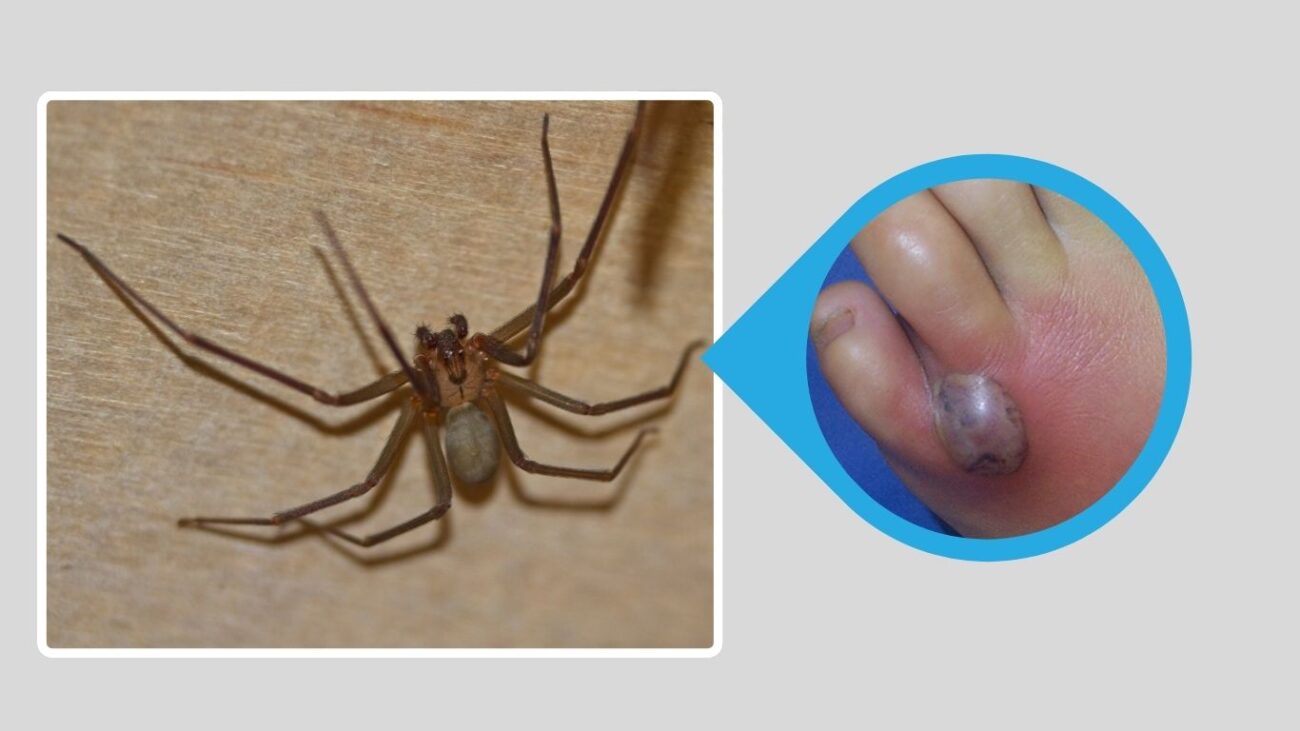
The Arizona Recluse Spider is native to Arizona and parts of New Mexico. It is less commonly encountered than the brown recluse but still capable of delivering venomous bites. This species thrives in the dry, warm climates of the American Southwest.
Identification
- Color: Yellowish to light brown
- Size: 6–12 mm body length
- Marking: Subtle violin shape on the cephalothorax
- Eyes: Six eyes arranged in three pairs
- Legs: Thin and uniformly colored
Habitat
This recluse prefers undisturbed areas in arid environments. Outdoors, it hides under rocks and debris. Indoors, it may seek shelter in closets, behind furniture, or storage areas, especially in rural homes or buildings near desert terrain.
Behaviors
Arizona recluses are solitary and nocturnal. They come out at night to hunt and hide during the day. Like other recluse spiders, they are not aggressive and tend to retreat from threats.
Diet and Lifecycle
Feeds on soft-bodied insects and other small arthropods. Females produce multiple egg sacs with around 40–50 eggs each. Spiderlings mature in 10–12 months and adults can live for 2–3 years.
Bite Symptoms
- Red, irritated skin around the bite
- Possible development of a blister
- Mild to moderate tissue damage in rare cases
- Symptoms usually resolve without medical intervention
5. Texas Recluse Spider (Loxosceles devia)
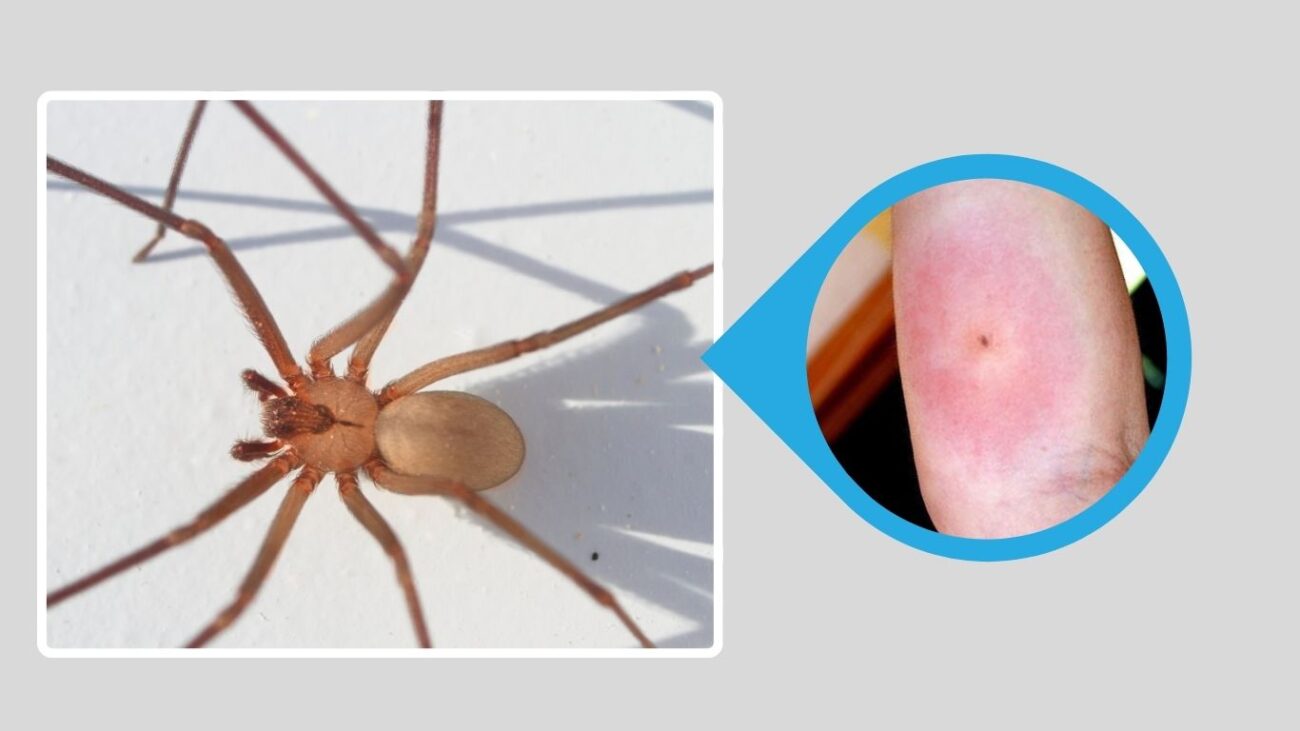
The Texas Recluse Spider is found mainly in southern Texas and northeastern Mexico. Though not as commonly known as the brown recluse, it can still inflict necrotic bites. It prefers dry, protected spaces and is rarely seen unless disturbed.
Identification
- Color: Light brown to dark yellow
- Size: 6–15 mm
- Marking: Faint or indistinct violin shape
- Eyes: Six in three pairs (dyads)
- Legs: Long and slender, covered in fine hair
Habitat
This spider is typically found outdoors under rocks, wood, and other debris in dry regions. Indoors, it hides in quiet, undisturbed locations such as basements, sheds, or closets in rural homes.
Behaviors
Texas recluses are nocturnal hunters. They avoid confrontation and are rarely seen during the day. They do not spin webs to trap prey and rely on stealth and speed to catch insects.
Diet and Lifecycle
Feeds on crickets, beetles, and other small insects. Females lay multiple egg sacs per year. The full development cycle may take about one year depending on conditions.
Bite Symptoms
- Pain and redness within hours
- Potential ulcer formation with surrounding tissue death
- Low chance of severe reactions
- Healing usually occurs over a few weeks with proper care
6. Apache Recluse Spider (Loxosceles apachea)
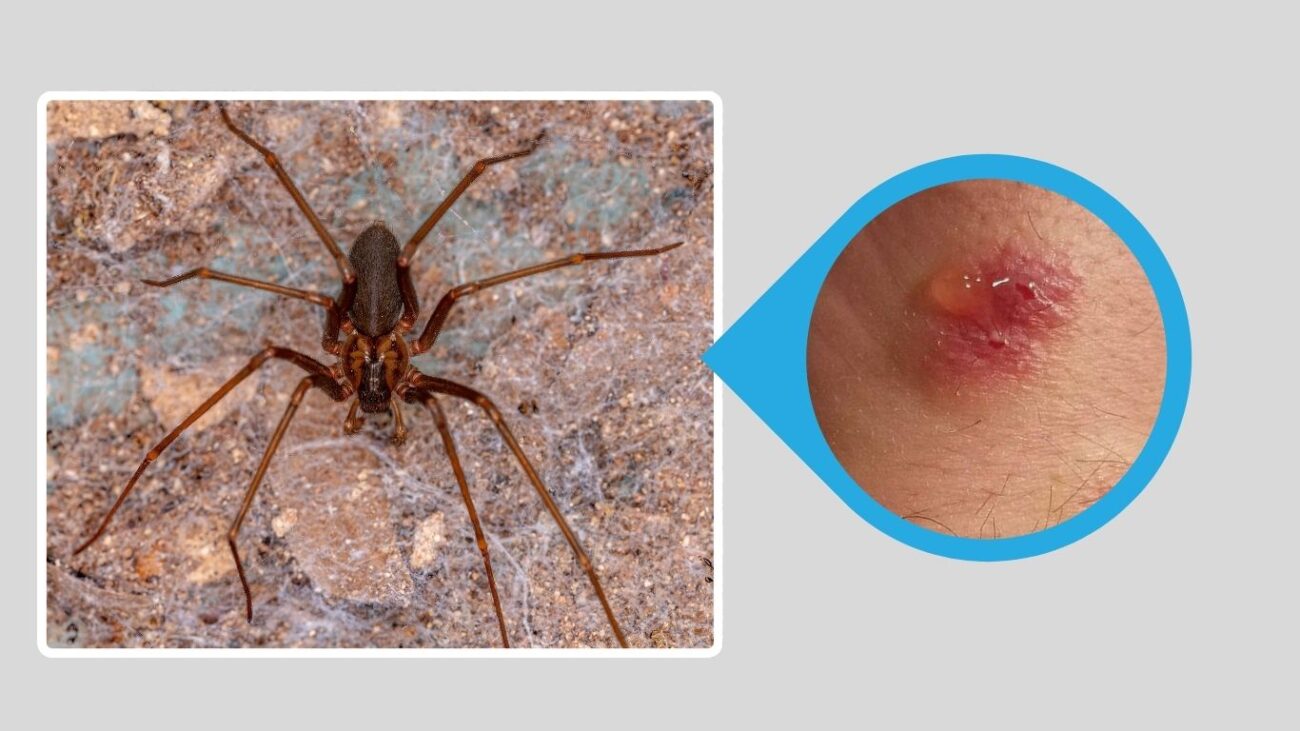
The Apache Recluse Spider is native to southeastern Arizona and parts of New Mexico. It is one of the lesser-known recluse species but shares many features and behaviors with its relatives. Though rare, it can still cause necrotic bites if disturbed.
Identification
- Color: Tan to medium brown
- Size: 6–12 mm body length
- Marking: Light violin pattern on cephalothorax
- Eyes: Six eyes arranged in three dyads
- Legs: Long, delicate, and uniformly colored
Habitat
This species inhabits desert regions, often hiding beneath rocks, debris, and in shaded outdoor crevices. Indoors, it may occasionally be found in secluded areas such as storage sheds or old structures near wilderness zones.
Behaviors
The Apache recluse is nocturnal and avoids light and activity. It hunts by wandering at night and does not rely on webs. It usually flees rather than defends itself when threatened.
Diet and Lifecycle
Feeds on small insects and other invertebrates. The female lays egg sacs containing around 30–40 eggs. Young spiders hatch within a few weeks, and adulthood is reached in about a year.
Bite Symptoms
- Burning pain or stinging sensation
- Redness and mild swelling
- Possible necrosis in rare cases
- Most bites heal on their own with minimal medical care
7. Big Bend Recluse Spider (Loxosceles martha)
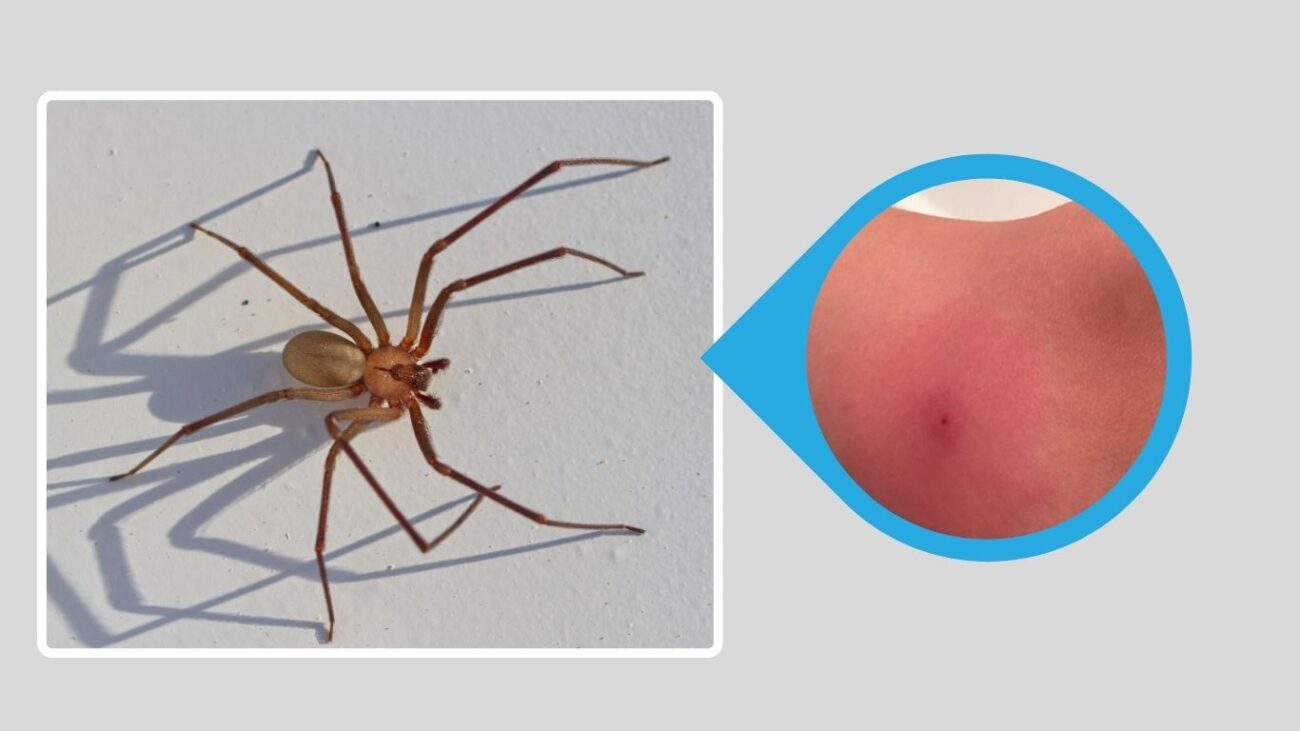
The Big Bend Recluse Spider is named after the Big Bend region of Texas, where it is mainly found. It is one of the more localized recluse spiders in the U.S. and is rarely encountered by humans due to its isolated habitat.
Identification
- Color: Pale yellow to light brown
- Size: 7–15 mm
- Marking: Very faint or no violin mark
- Eyes: Six eyes in three pairs
- Legs: Smooth, long, and lightly haired
Habitat
Found in dry, rocky areas of west Texas, especially around the Big Bend National Park. It typically shelters under stones, logs, or debris in natural, undisturbed areas.
Behaviors
This spider is highly reclusive and rarely enters homes or buildings. It hunts at night and spends the daytime in well-hidden locations. It avoids human activity whenever possible.
Diet and Lifecycle
Eats ants, beetles, and small insects. Females produce several egg sacs with dozens of eggs. The development time to adulthood varies by environmental conditions but is usually 10–12 months.
Bite Symptoms
- Mild stinging at first
- Swelling and redness
- Blister formation in some cases
- Healing usually occurs without severe complications
8. Bland Recluse Spider (Loxosceles blanda)
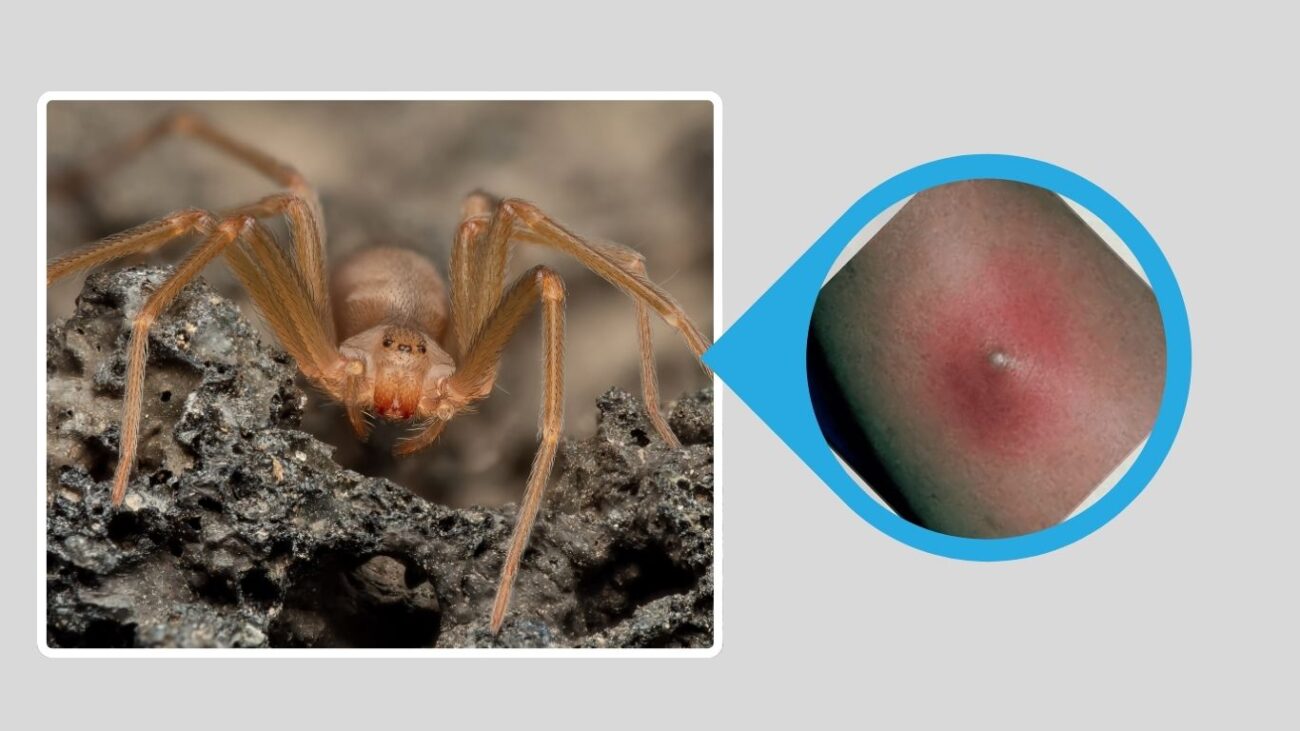
The Bland Recluse Spider is a rare species within the Loxosceles genus and is primarily found in parts of Mexico. Though not as commonly encountered as other recluse spiders, it shares similar physical features and behavior patterns.
Identification
- Color: Light brown or sandy beige
- Size: Approximately 6–12 mm
- Marking: Subtle or absent violin marking
- Eyes: Six eyes arranged in three dyads
- Legs: Long and thin, covered in fine hairs
Habitat
This spider prefers dry environments and is typically found under rocks, in crevices, or beneath leaf litter. It rarely enters human dwellings and stays in secluded, natural areas.
Behaviors
The Bland recluse is secretive and non-aggressive. It comes out only at night to hunt for food and hides during the day. It will bite only when trapped or threatened.
Diet and Lifecycle
Feeds on small arthropods and soft-bodied insects. The female lays egg sacs containing 30–50 eggs. Juveniles develop over several molts and reach maturity in about one year.
Bite Symptoms
- Slight irritation and redness
- Mild to moderate tissue reaction
- Ulceration is rare
- Most bites heal with basic care and do not require hospitalization
9. Accepted Recluse Spider (Loxosceles accepta)
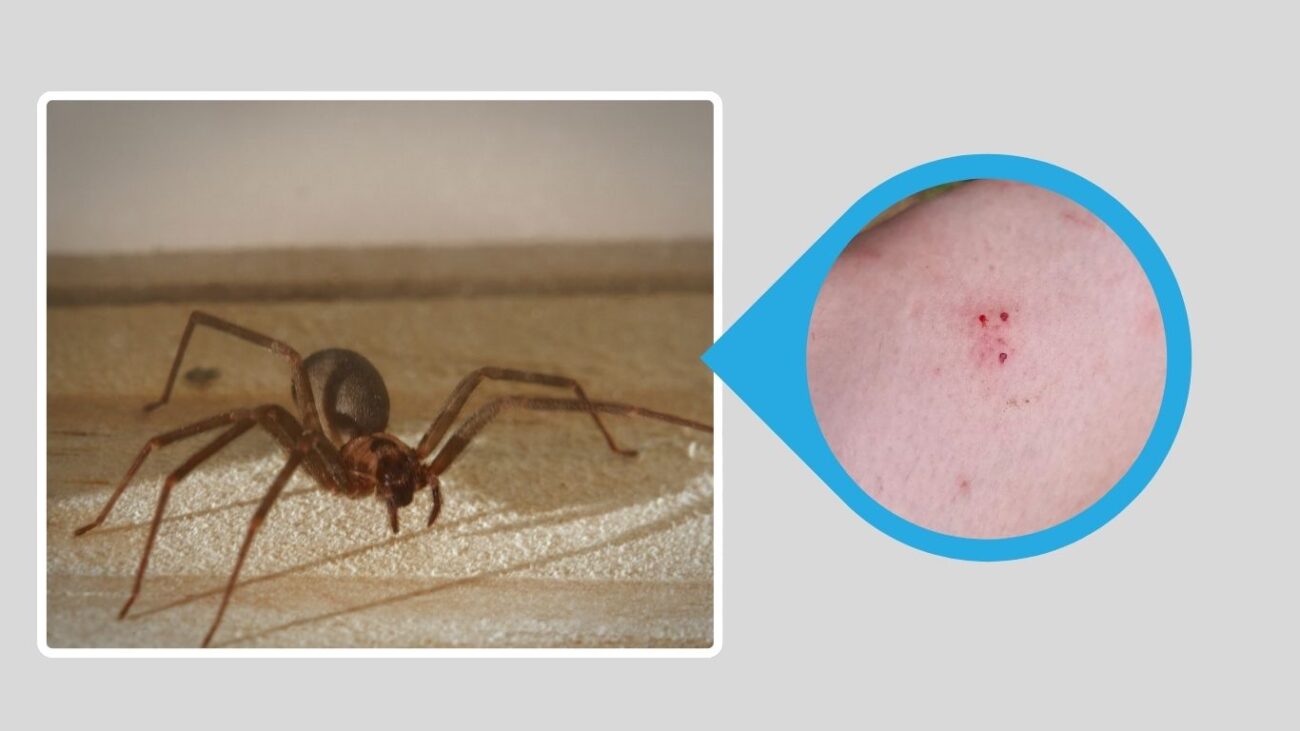
The Accepted Recluse Spider is native to Mexico and closely related to the desert and Texas recluse species. It is not widely studied but is recognized for its typical recluse characteristics and occasional reports of venomous bites.
Identification
- Color: Pale tan to medium brown
- Size: 6–13 mm
- Marking: Faint violin mark may be present
- Eyes: Six arranged in three pairs
- Legs: Long, smooth, and uniformly colored
Habitat
Found in warm, arid environments, particularly in rocky or desert-like terrain. It shelters under natural cover like stones, bark, and crevices, and rarely comes indoors.
Behaviors
The Accepted recluse is solitary and nocturnal, avoiding humans and disturbances. It actively hunts for prey and uses its venom to immobilize insects quickly.
Diet and Lifecycle
Eats ants, silverfish, and small ground-dwelling insects. Females produce multiple egg sacs with 30–40 eggs each. Spiderlings grow slowly, taking nearly a year to reach full size.
Bite Symptoms
- Initial mild burning or itchiness
- Swelling and skin irritation
- Necrosis is possible but not common
- Healing usually occurs within a few weeks
10. Misteca Recluse Spider (Loxosceles misteca)
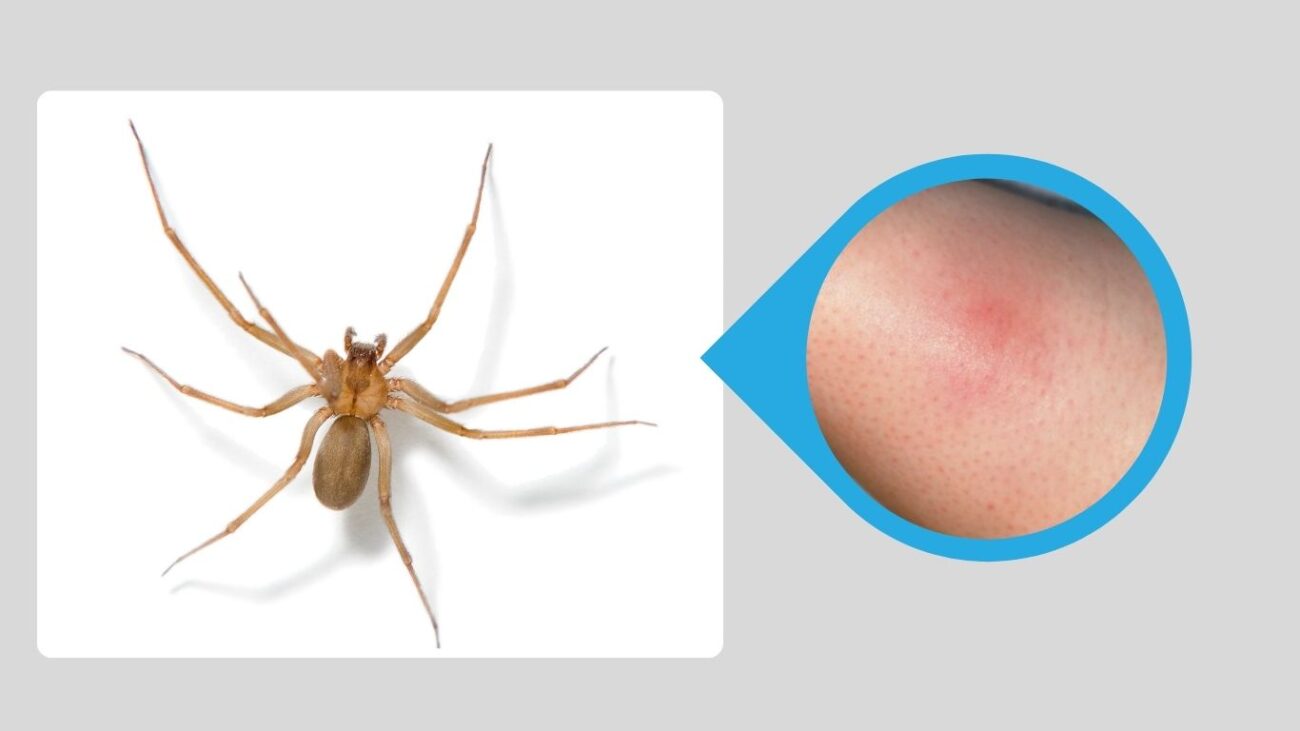
The Misteca Recluse Spider is native to Mexico and is occasionally found in southern parts of the United States. It is not well-known but shares the same general characteristics as other recluse spiders, including a necrotic venom.
Identification
- Color: Light brown to reddish brown
- Size: 6–14 mm
- Marking: May have a faint or indistinct violin shape
- Eyes: Six arranged in three dyads
- Legs: Long, slender, and evenly colored
Habitat
The Misteca recluse prefers dry, sheltered environments such as rock piles, tree bark crevices, or beneath logs. It can sometimes be found inside older buildings or barns in rural areas.
Behaviors
This spider is secretive and nocturnal, hiding during daylight and hunting small insects at night. It generally avoids human contact and will only bite if disturbed or pressed against the skin.
Diet and Lifecycle
Feeds on ants, beetles, and other small insects. The female lays egg sacs with 30–50 eggs. The young spiders hatch and grow slowly, reaching adulthood in about a year.
Bite Symptoms
- Itchy or painful bite site
- Redness and swelling may occur
- Ulcers may develop in sensitive individuals
- Most bites heal on their own with basic wound care
11. San Francisco Recluse Spider (Loxosceles franciscanus)

The San Francisco Recluse Spider is found in central California, particularly in areas near the San Francisco Bay. While less aggressive than some relatives, its bite can still lead to localized skin reactions.
Identification
- Color: Yellowish brown to reddish brown
- Size: 7–15 mm
- Marking: Violin marking is faint or missing
- Eyes: Six in three pairs
- Legs: Smooth and slender, similar to other recluse species
Habitat
Lives in dry, undisturbed habitats including woodpiles, beneath rocks, and under debris. In urban settings, it may hide in garages, sheds, or crawl spaces.
Behaviors
The San Francisco recluse avoids light and movement. It hunts at night and prefers quiet, cluttered spaces. It is passive and only bites in self-defense.
Diet and Lifecycle
Feeds on crawling insects and other small arthropods. Females produce multiple egg sacs yearly. Development from egg to adult takes about 10–12 months depending on climate.
Bite Symptoms
- Local redness and tenderness
- May develop into a small sore or lesion
- Ulceration is possible but uncommon
- Typically heals within a few weeks
12. Brazilian Recluse Spider (Loxosceles gaucho)
The Brazilian Recluse Spider is a medically significant species found in South America, particularly in Brazil. It is known for its potent venom, which can cause severe dermonecrotic lesions. It closely resembles the brown recluse but is slightly larger.
Identification
- Color: Yellowish brown to reddish brown
- Size: 8–20 mm
- Marking: Distinct violin-shaped marking on the cephalothorax
- Eyes: Six eyes in three dyads
- Legs: Long and thin, lightly covered with fine hair
Habitat
Found in forests, savannas, and sometimes inside homes and buildings in urban and rural regions of Brazil. It hides in furniture, closets, and behind stored items.
Behaviors
This spider is nocturnal and hides during the day in dark corners. It actively hunts at night and is non-aggressive unless provoked. It does not spin webs to trap prey.
Diet and Lifecycle
Feeds on cockroaches, ants, and other small insects. Females lay egg sacs containing up to 50 eggs. Spiderlings mature over the course of several molts, reaching adulthood in 10–12 months.
Bite Symptoms
- Immediate pain or burning
- Redness followed by ulcer development
- Severe necrosis in some cases
- May cause fever, chills, and systemic effects in rare instances
13. Mediterranean Recluse Spider (Loxosceles rufescens)
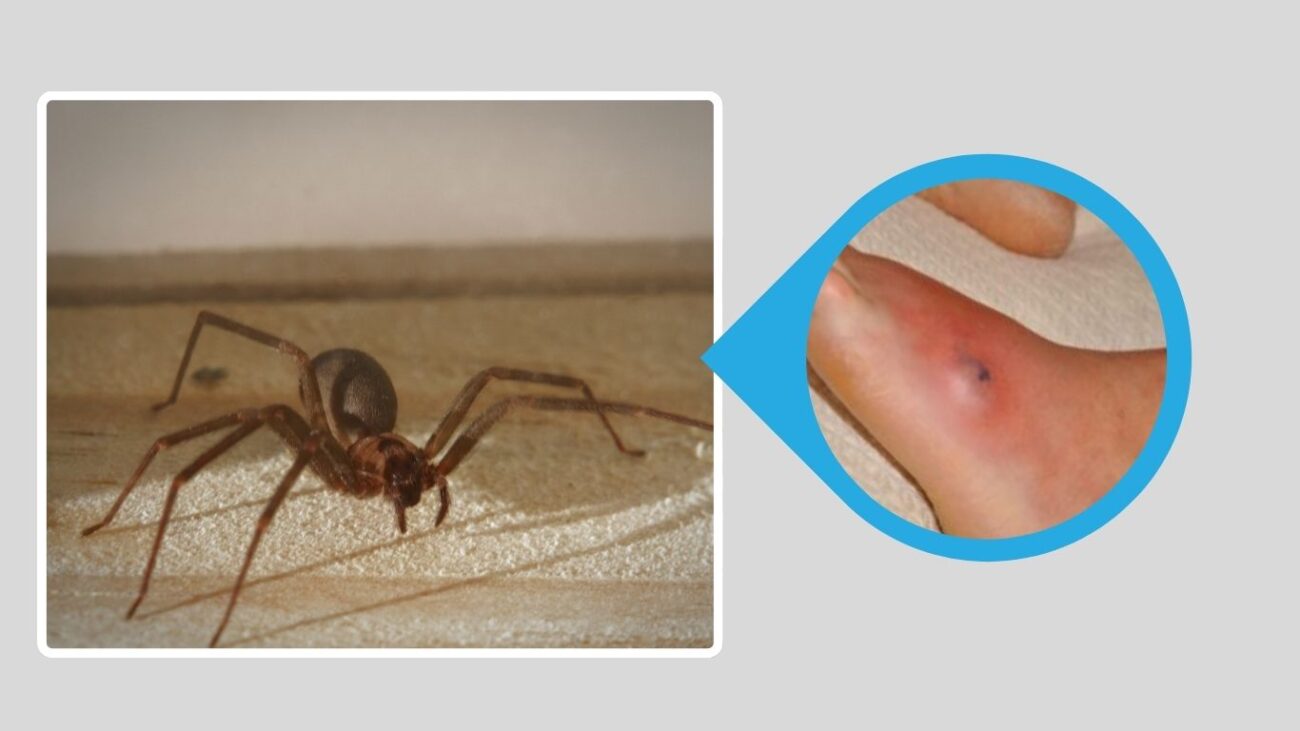
The Mediterranean Recluse Spider is native to the Mediterranean region but has spread globally due to human movement. It is commonly found in parts of Europe, Asia, the Middle East, and even parts of the U.S. It is less venomous than the Chilean recluse but still capable of causing necrotic bites.
Identification
- Color: Pale brown to reddish brown
- Size: 7–14 mm
- Marking: Faint or indistinct violin shape
- Eyes: Six arranged in three pairs
- Legs: Long, uniform in color, and thin
Habitat
Often found indoors in warm environments like basements, attics, and under furniture. It also inhabits caves, ruins, and sheltered outdoor areas in dry regions.
Behaviors
Nocturnal and shy, the Mediterranean recluse hides during the day. It may be found in cluttered, low-traffic indoor spaces. It will only bite if pressed against skin or disturbed.
Diet and Lifecycle
Feeds on silverfish, ants, and other small arthropods. The female lays several egg sacs, each holding 30–40 eggs. Development to maturity can take up to a year.
Bite Symptoms
- Mild to moderate burning at the bite site
- Redness and possible ulceration
- Healing time varies but is usually a few weeks
- Serious complications are rare
14. Spiny Recluse Spider (Loxosceles spinulosa)
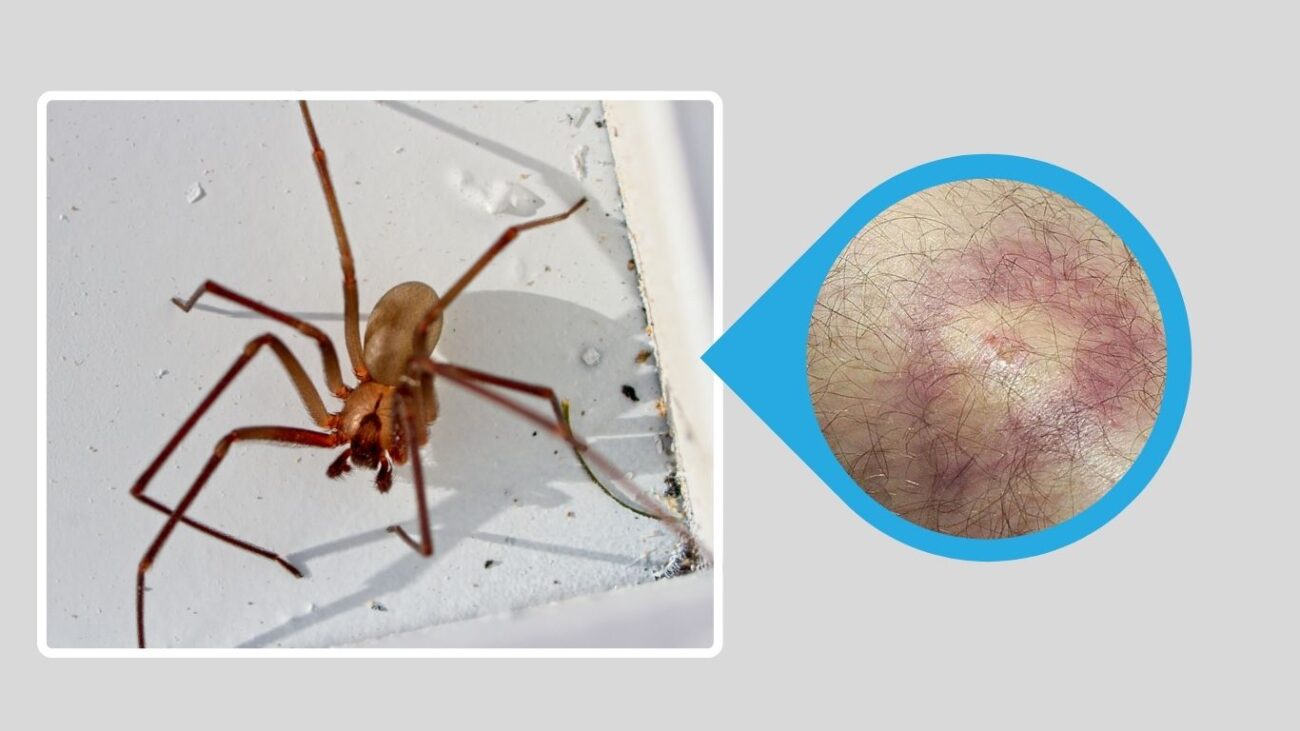
The Spiny Recluse Spider is a lesser-known species found in parts of South and Central America. It is named for the tiny spines or projections observed on parts of its exoskeleton under magnification. Though not frequently encountered, it shares venomous characteristics with other Loxosceles spiders.
Identification
- Color: Light brown to reddish tan
- Size: 6–12 mm
- Marking: Faint or absent violin marking
- Eyes: Six arranged in three dyads
- Legs: Long and delicate, covered with fine hairs
Habitat
Prefers secluded, dry habitats like rock piles, decaying logs, or crevices. Indoors, it may shelter in dark storage areas but is rarely seen due to its reclusive nature.
Behaviors
This species is extremely shy and avoids disturbance. It hunts small prey at night and hides during daylight. It’s not aggressive and will flee unless physically threatened.
Diet and Lifecycle
Feeds on ants, beetles, and other insects. The female lays multiple egg sacs annually, with 30–50 eggs each. The young take nearly a year to mature under favorable conditions.
Bite Symptoms
- Mild pain and redness
- Possible blister or ulcer formation
- Healing typically occurs without medical intervention
- Necrosis is uncommon but can occur in sensitive individuals
15. Brazilian Brown Recluse Spider (Loxosceles intermedia)
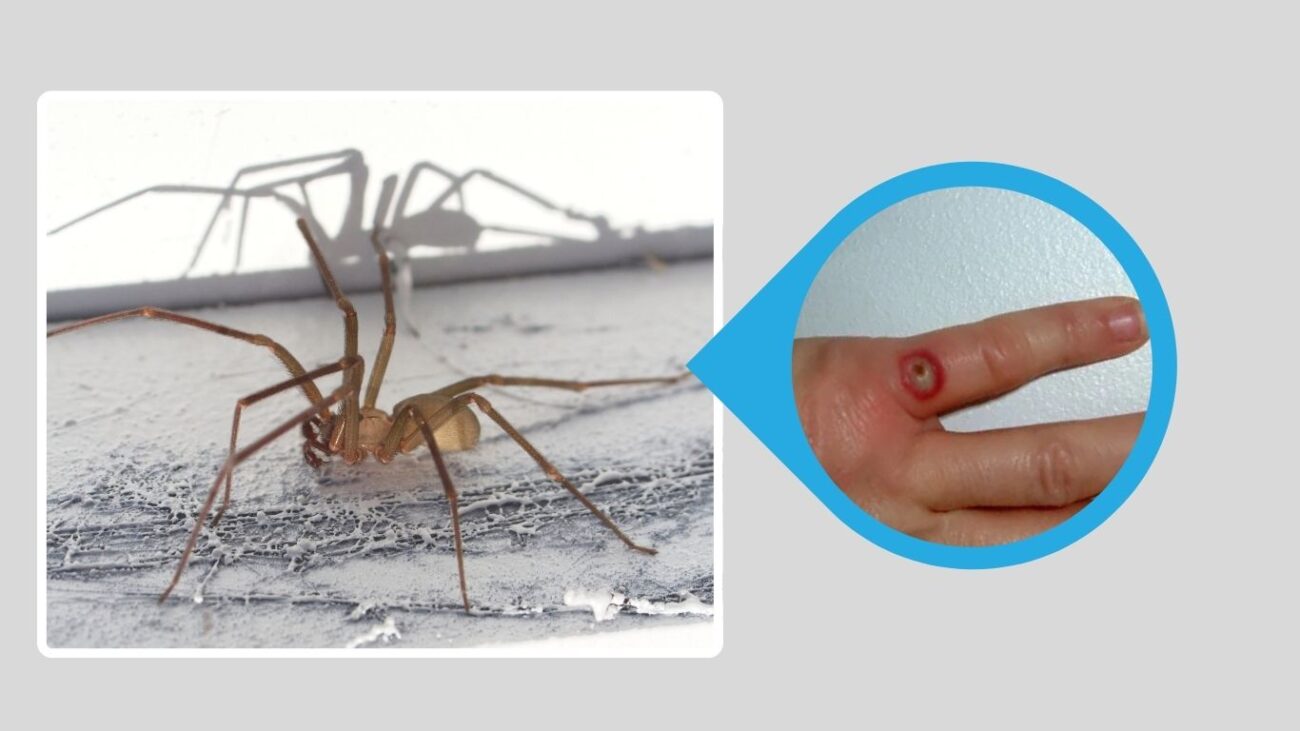
The Brazilian Brown Recluse Spider is one of the most studied Loxosceles species in Brazil. It is known for medically significant bites and is commonly found in homes, especially in southern Brazil. It is slightly smaller than Loxosceles laeta but still dangerous.
Identification
- Color: Light to dark brown
- Size: 7–15 mm
- Marking: Violin marking may be faint or well-defined
- Eyes: Six eyes in three pairs
- Legs: Long, smooth, and unmarked
Habitat
Found in homes, warehouses, and urban environments, especially in cluttered or undisturbed areas. Outdoors, it lives under stones, in woodpiles, and within leaf litter.
Behaviors
It is nocturnal and secretive, preferring to avoid confrontation. It hides during the day and actively hunts insects at night.
Diet and Lifecycle
Feeds on cockroaches, crickets, and other small arthropods. Females produce several egg sacs per year, each containing 40–50 eggs. The spider reaches maturity in 10–12 months.
Bite Symptoms
- Burning or stinging sensation
- Skin lesion with potential necrosis
- Fever, nausea, or chills in severe cases
- Healing varies from days to weeks depending on severity
FAQs
Are all recluse spiders dangerous to humans?
Not all recluse spiders pose the same level of danger. While species like the Brown Recluse (Loxosceles reclusa) and Chilean Recluse (Loxosceles laeta) can cause severe necrotic bites, others usually result in mild symptoms or no reaction at all.
How can I tell if a spider is a recluse?
Recluse spiders have six eyes arranged in three pairs, a violin-shaped marking on their back (in some species), and uniformly colored legs without spines. However, professional identification is recommended for accuracy.
What should I do if I get bitten by a recluse spider?
Clean the bite area with soap and water, apply a cold compress, and monitor the site for signs of worsening. Seek medical attention if severe symptoms develop, such as tissue damage, fever, or spreading redness.
Where are recluse spiders commonly found?
They prefer warm, dark, and undisturbed places such as basements, attics, closets, storage areas, woodpiles, and under rocks. They are most common in the southern and central United States and parts of Central and South America.
Can recluse spiders be prevented from entering homes?
Yes. Seal cracks and gaps in doors and windows, reduce clutter, store items in plastic containers, and remove piles of debris or wood near your home. Regular cleaning and pest control can help minimize the risk.



